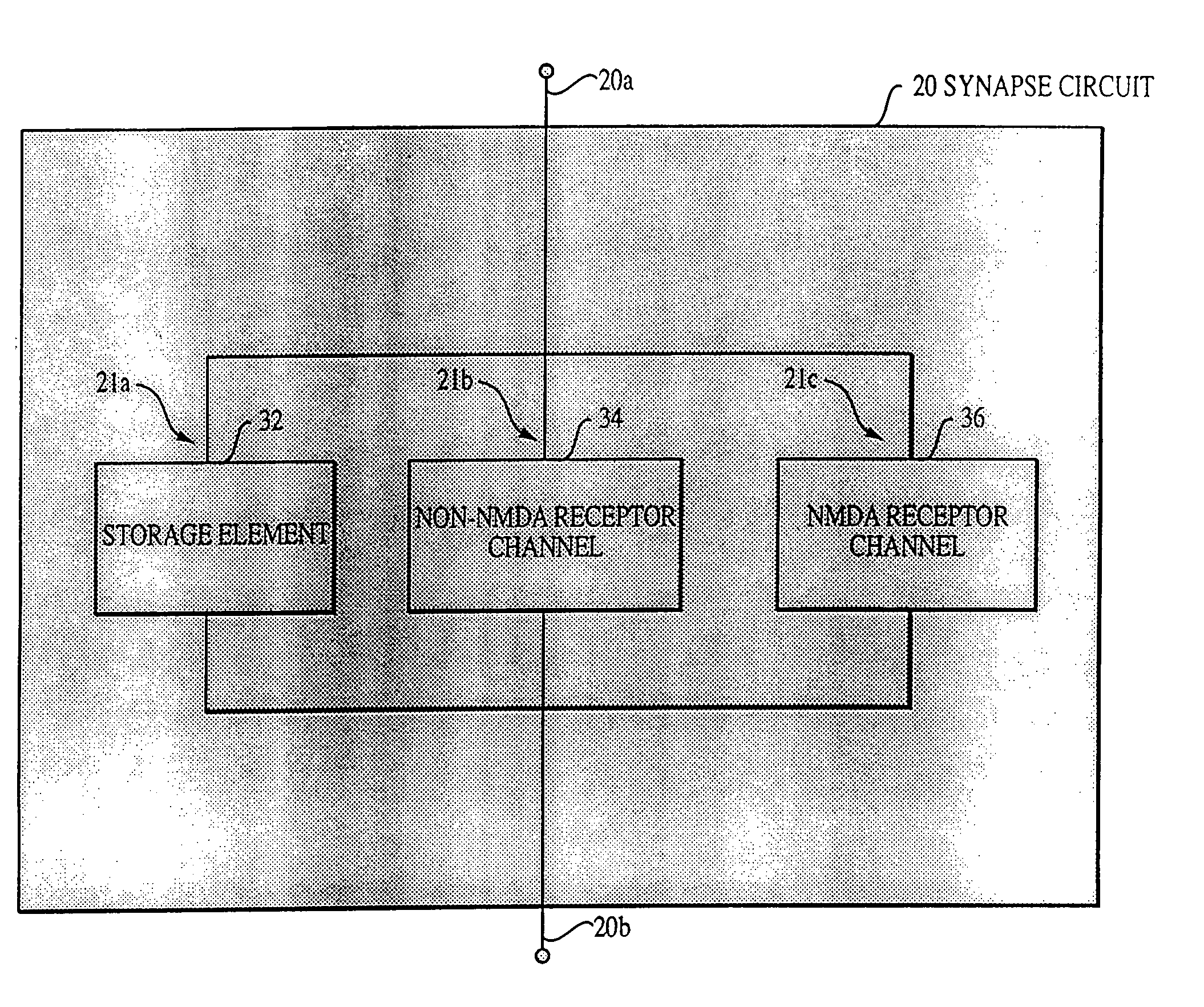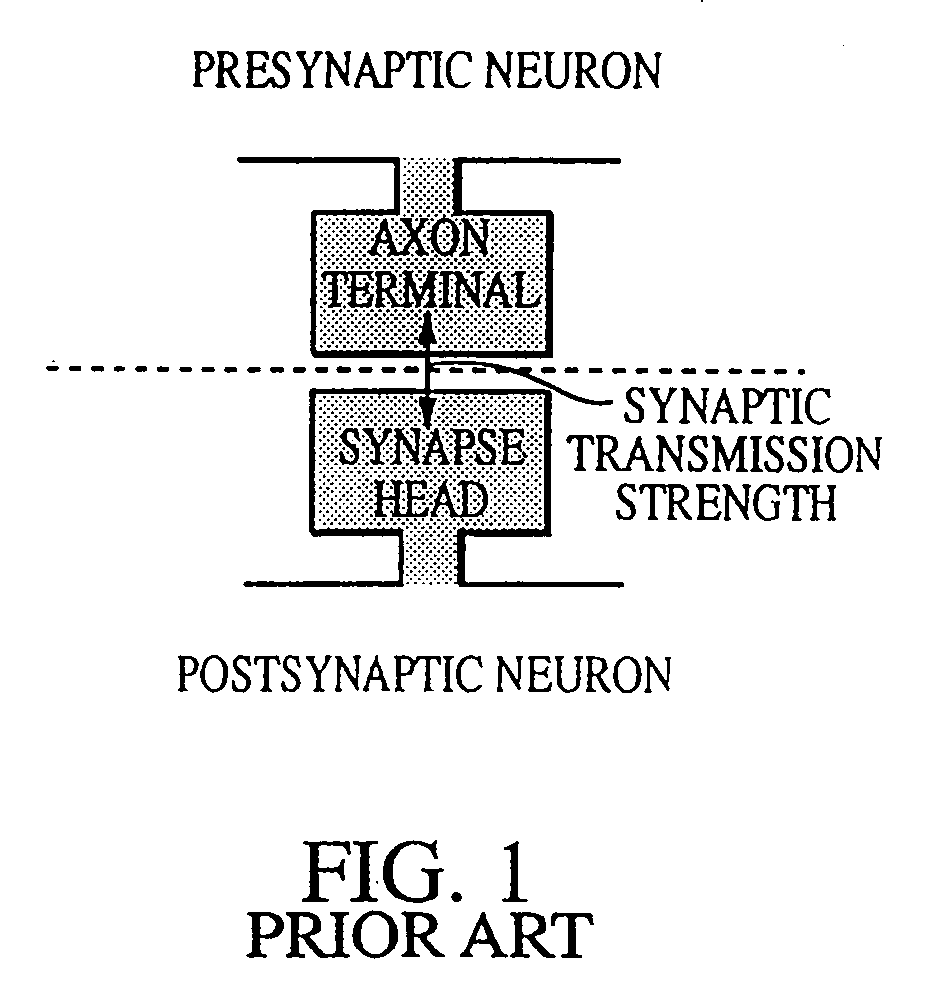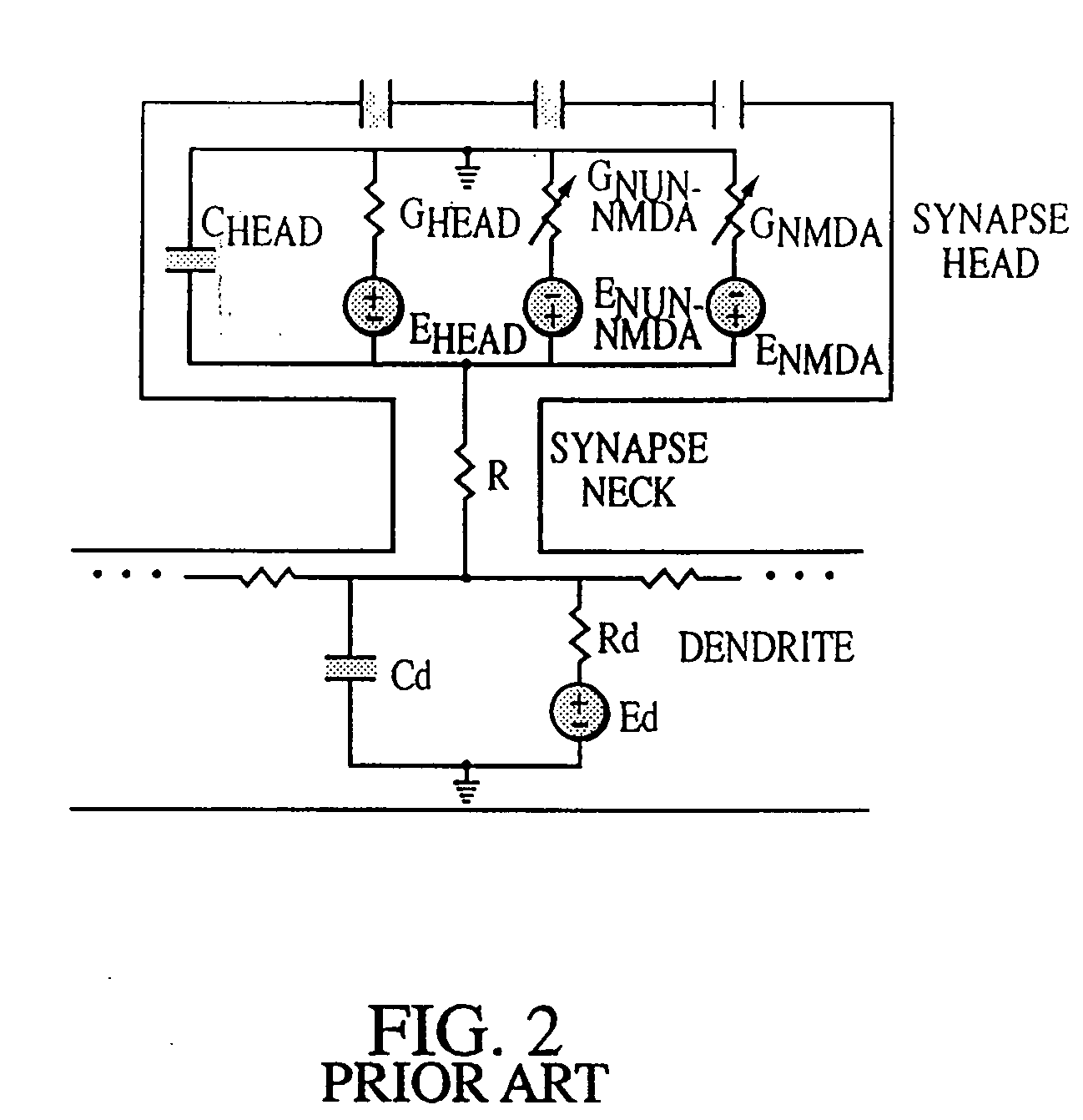Hebbian synapse circuit
a synapse circuit and synapse technology, applied in the field of electrical circuits, can solve the problems of complex digital circuits, inability to utilize life-like neural computation principles, and the time-consuming and laborious of software simulations, so as to increase or decrease the transmission in the channel, increase or decrease the conductance and prolong the effect of the non-nmda receptor channel conductan
- Summary
- Abstract
- Description
- Claims
- Application Information
AI Technical Summary
Benefits of technology
Problems solved by technology
Method used
Image
Examples
Embodiment Construction
[0052] Before describing the apparatus and processes for providing a neuron circuit, some introductory concepts and terminology are explained. The biological neuron is the basic anatomical unit of a biological nervous system. It includes a cell body equipped with a tree of filamentary structures called dendrites. The dendrites are covered with structures called synapses. The synapses act as junctions through which are formed connections with other neurons. The synapses are the primary information processing elements in neural systems. The dendrites sum the synaptic inputs from other neurons, and the resulting currents are integrated on the membrane capacitance of the cell body until a signal threshold level is reached. At that point, an output neuron pulse, called the action potential, is generated and then propagates down the neuron's axon which is a relatively long structure used to transmit data. The end of the axon consists of a tree-shaped structure of synaptic contacts that co...
PUM
 Login to View More
Login to View More Abstract
Description
Claims
Application Information
 Login to View More
Login to View More - R&D
- Intellectual Property
- Life Sciences
- Materials
- Tech Scout
- Unparalleled Data Quality
- Higher Quality Content
- 60% Fewer Hallucinations
Browse by: Latest US Patents, China's latest patents, Technical Efficacy Thesaurus, Application Domain, Technology Topic, Popular Technical Reports.
© 2025 PatSnap. All rights reserved.Legal|Privacy policy|Modern Slavery Act Transparency Statement|Sitemap|About US| Contact US: help@patsnap.com



